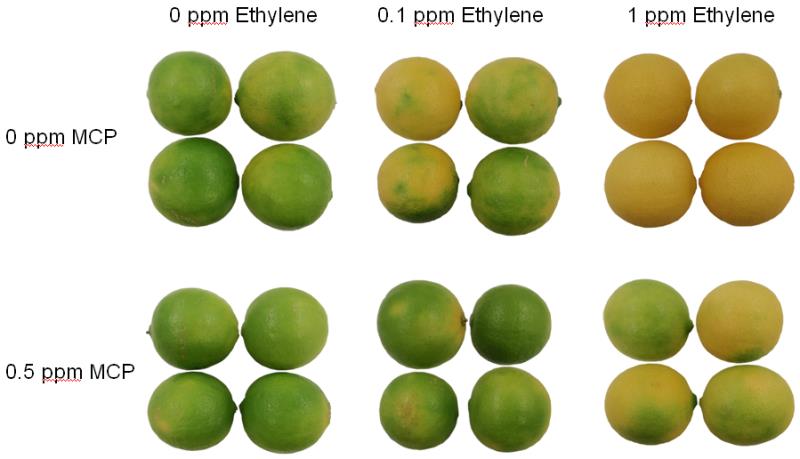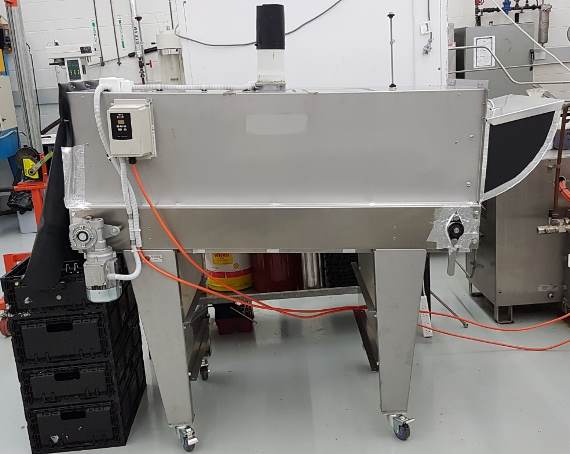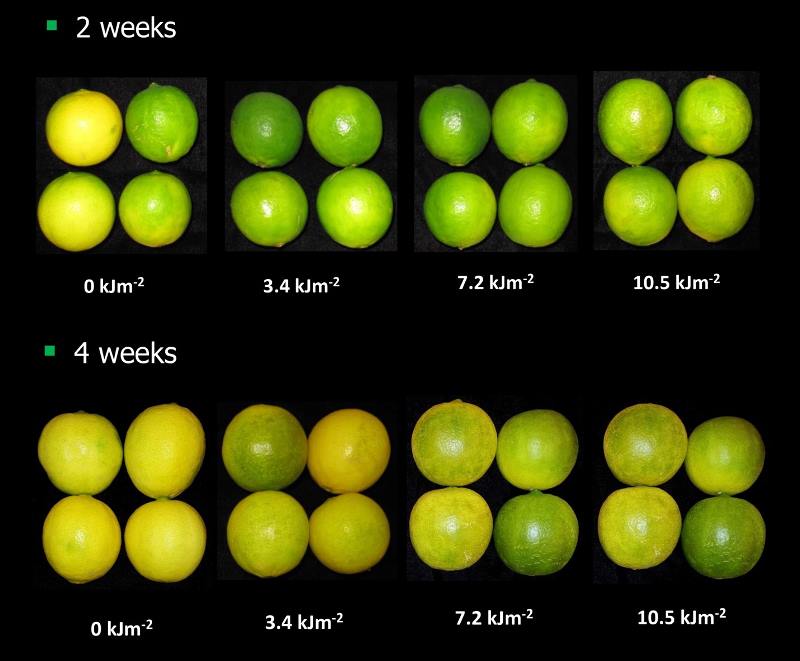
Maintaining lime fruit quality during storage: Dec 2018
John Golding (NSW DPI) and Penta Pristijono (University of Newcastle), December 2018.
Growing and supplying limes consistently for the local market is inherently challenging for growers. The main problem is yellowing of the green peel because market preference is for fresh green fruit. To ensure a consistent supply of green limes into the market, a recommended storage temperature of 10 oC is used to minimise peel colour change. Other options to maintain fruit quality after harvest to date are limited. Some reports have used controlled atmosphere storage to maintain fruit quality, but this is often not commercial. Therefore, we conducted a series of storage trials using different postharvest technologies including ethylene, 1-Methyl cyclopropene and ultra violet light to maintain lime fruit quality.
Ethylene
Ethylene is the natural ripening hormone that is used commercially to de-green early season mandarins and navel oranges (Australian Citrus News, May 2017). Ethylene is naturally produced by all fruit and vegetables, but at different levels and rates. Applying ethylene during de-greening breaks down the green chlorophyll in the peel of oranges and mandarins so the rind will turn an orange colour. Therefore to maintain the green colour of limes, it is logical to keep the ethylene away from the mature green lime fruitIn a series of storage experiments with lime fruit, we controlled the level of ethylene around the fruit. As expected, higher levels of ethylene resulted in de-greening, while lower levels of ethylene maintained the green fruit colour (Figure 1). This shows the need to reduce the levels of ethylene in the storage room if limes are present. This can be achieved with different ethylene scrubbing technologies, such as using potassium permanganate pouches within boxes, or using ethylene scrubbers in storage rooms.
1-MCP technology
1-Methyl cyclopropene (1-MCP) is widely used for maintaining apple fruit quality during storage and is registered for use on many horticultural products, but not currently citrus. 1-MCP is safe to use and works in a non-toxic way by delaying the action of ethylene in fruit and vegetables. In these storage trials (allowed under the small-scale trial permit PER7250), treatment with 1-MCP retained peel green colour, even in the presence of moderate levels of ethylene (Figure 1). However, the beneficial effect of a single 1-MCP treatment on peel colour only lasts for a short period, after which the stored fruit will go yellow. It should be noted that 1-MCP is not currently registered for citrus or limes.

Use of ultraviolet light
Using ultra violet light postharvest is a new method for maintaining fruit and vegetable quality during storage. In a series of different storage experiments, we used ultraviolet (UV-C) light to retard senescence and aging of the fruit. UV-C is part of the regular light spectrum, constituting about 10% of the total light output of the sun, yet having shorter wavelengths (100–280 nm) than that of visible light. UV-C light can cause sunburn and skin cancer in humans, but limited exposure is necessary for Vitamin D production. In these trials, the UV-C treatment was applied to the fruit in specialised treatment cabinets where there was no potential human exposure to harmful UV-C light (see Figure 2). It is envisaged that this type of treatment cabinet could be integrated to commercial packing lines.

We applied different intensities of UV-C light to lime fruit after harvest and stored this fruit at room temperature. The results showed that UV-C treatment delayed the yellowing of limes after 2 weeks but was less effective after 4 weeks storage (Figure 3). UV-C treatment did not affect internal fruit quality, such as total soluble sugars (TSS) and titratable acidity (TA) levels. In a final series of storage trials we showed that the effects of both 1-MCP and UV-C were additive, meaning the combination of UV-C and 1-MCP was the best treatment.

These storage trials show there are potential options to maintain the green peel colour of lime fruit. Maintaining low ethylene levels around the fruit is a current option, but in the future the application of other postharvest treatments such as UV-C and 1-MCP may be commercialised to delay lime peel de-greening. However, more work is required to optimise these potential postharvest treatments for industry.
This article is a contribution from the Australian Citrus Postharvest Science Program (CT15010) funded by Horticulture Innovation and NSW Department of Primary Industries. Levies from Australian citrus growers are managed by Horticulture Innovation and contributed to funding this project. The Australian Government provides matched funding for all Horticulture Innovation’s research and development activities. Some of this research was conducted as part of the Australian Research Council Training Centre for Food and Beverage Supply Chain Optimisation (IC140100032).

